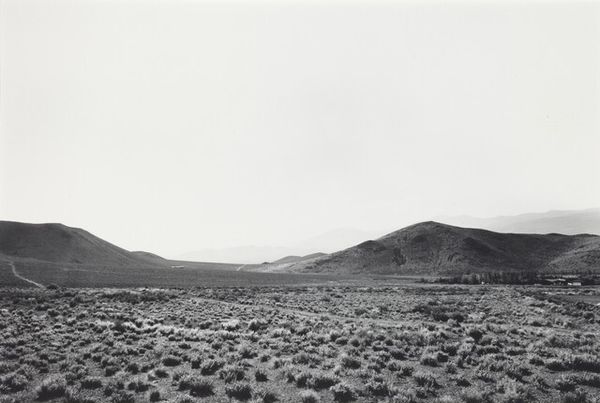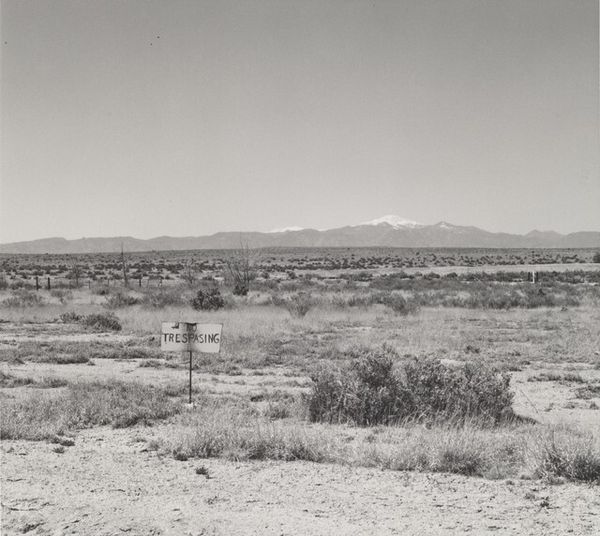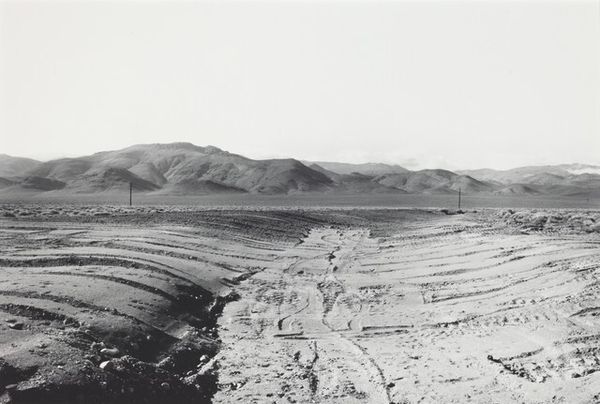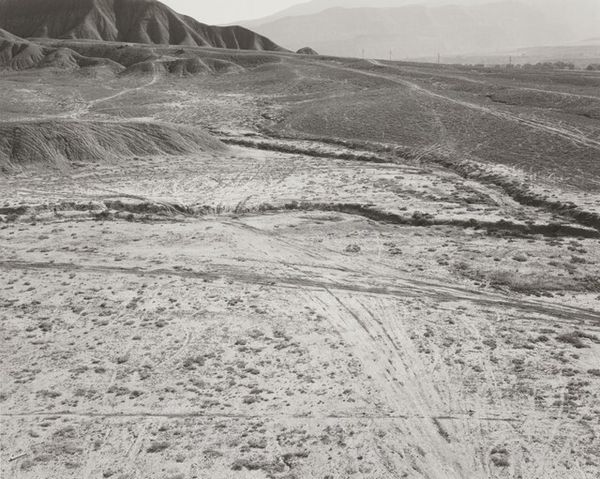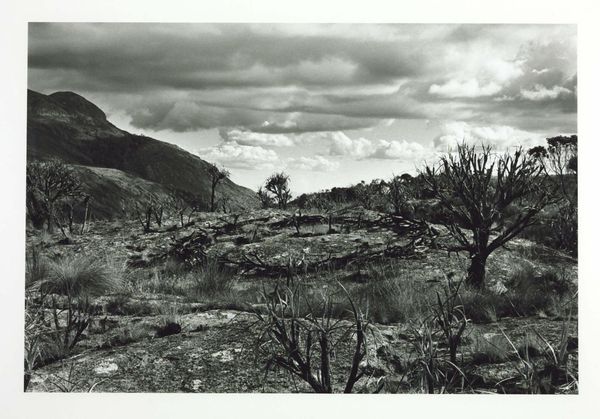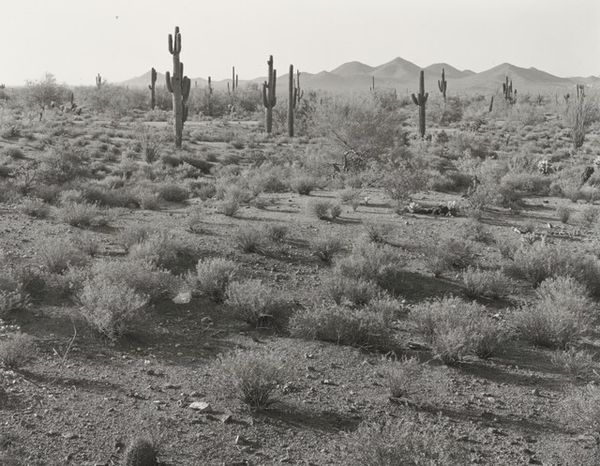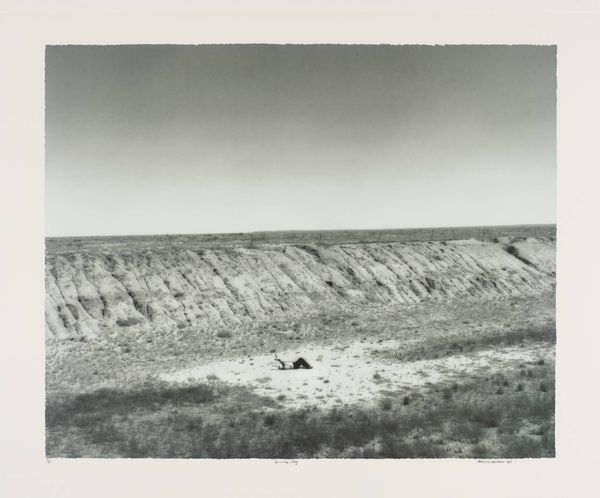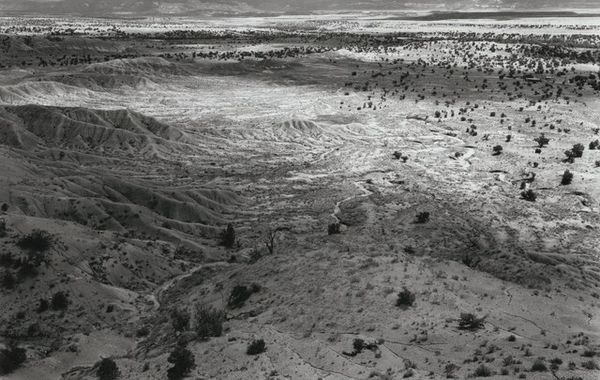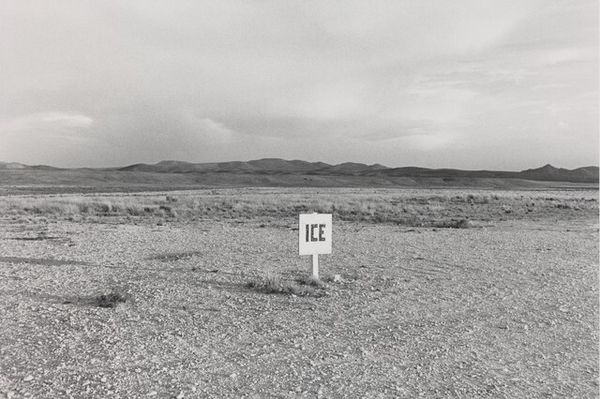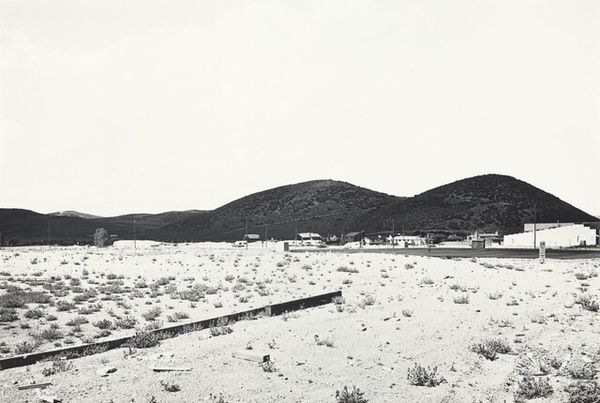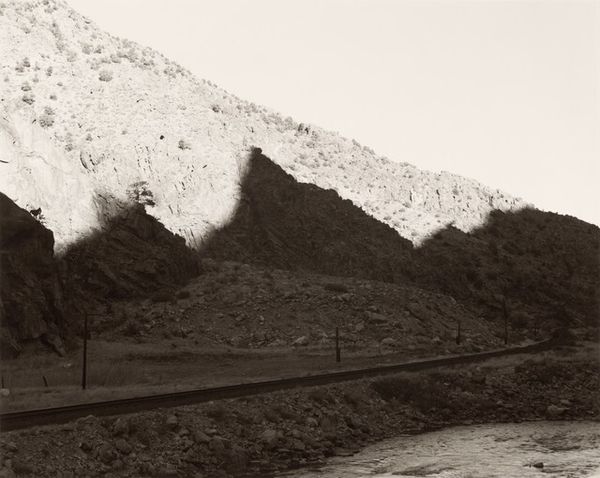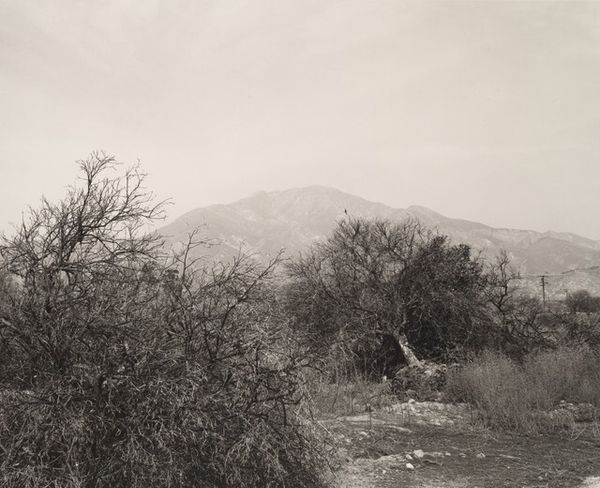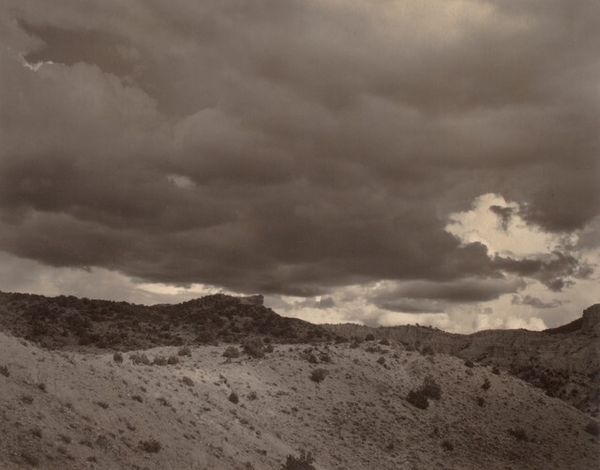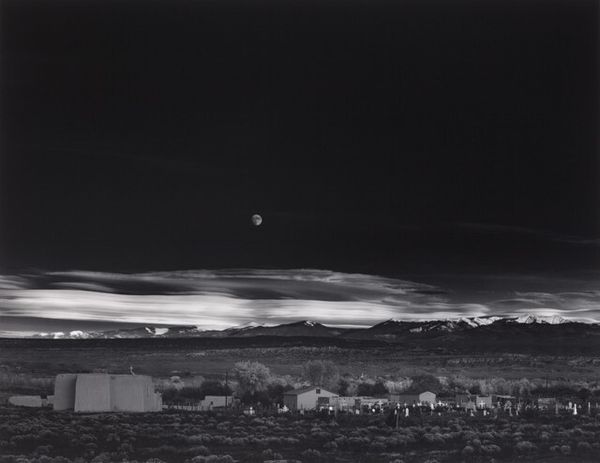
Dimensions: support: 830 x 1121 mm
Copyright: © Richard Long | CC-BY-NC-ND 4.0 DEED, Photo: Tate
Editor: Richard Long's photograph, "Silence Circle Big Bend Texas," captures a striking environmental intervention. The starkness of the landscape and the lone circle evoke a sense of profound isolation. What do you make of Long's gesture in this context? Curator: It whispers of ancient rituals, doesn't it? Like a forgotten compass, Long's circle centers us in the vastness, a temporary claim on the unclaimable. Does it echo the silence, or amplify the desert's quiet song, I wonder? Editor: It's almost like a meditation. I get lost in the circle! Curator: Precisely! Long invites us to contemplate our place within the landscape, the ephemeral nature of human intervention, and the enduring power of the earth itself. It's both humble and grand, isn’t it? Editor: I never thought of it that way! Thanks.
Comments
tate 8 months ago
⋮
http://www.tate.org.uk/art/artworks/long-silence-circle-big-bend-texas-t06472
Join the conversation
Join millions of artists and users on Artera today and experience the ultimate creative platform.
tate 8 months ago
⋮
Silence Circle Big Bend Texas is a large, framed, black and white photograph depicting a circle cleared in a stony area, punctuated by thorn bushes, in front of low, dry mountains. Under the photograph the first two words of the title, hand-written in red capital letters, are accompanied by a short descriptive text, in black capital letters, over three lines. It reads: ‘a resting place on a ten day walk/ along the Rio Grande and in the Chisos Mountains/ Big Bend Texas 1990’. Both in form and content, this work closely resembles an earlier work by Long, Circle in Africa 1978 (Tate T06890), a photograph of a circle of cactus branches assembled on a mountain in Malawi. Long has commented: ‘I think circles have belonged in some way or other to all people at all times. They are universal and timeless, like the image of a human hand. For me, that is part of their emotional power, although there is nothing symbolic or mystical in my work.’ (Quoted in Friis-Hansen, p30.) Making a circle, either by assembling or by clearing away natural elements, is one way for the artist to leaving his mark, albeit transitory, on the landscape he has passed through.
